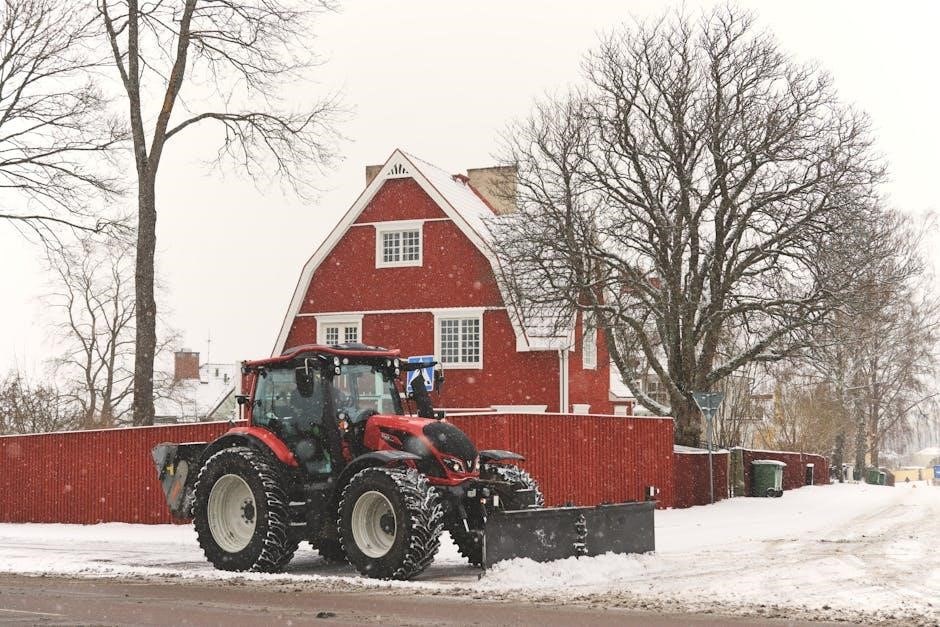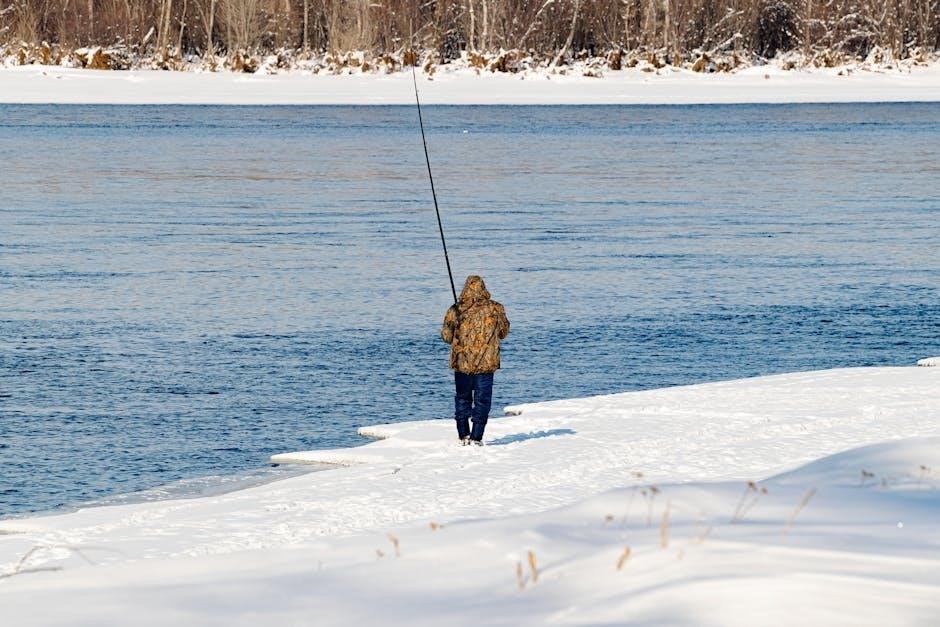
fisher snow plow troubleshooting guide
The Fisher Snow Plow Troubleshooting Guide is a valuable resource for operators, providing step-by-step instructions and solutions to common problems, helping to minimize downtime and ensure effective snow removal operations always using proper techniques daily.
Understanding Common Issues
Understanding common issues is crucial in the Fisher Snow Plow Troubleshooting Guide, as it enables operators to identify and address problems promptly, minimizing downtime and ensuring effective snow removal operations. The guide provides an overview of the most frequent issues encountered with Fisher snow plows, including electrical, hydraulic, and mechanical problems. By familiarizing themselves with these common issues, operators can develop a systematic approach to troubleshooting, which involves identifying symptoms, isolating the cause, and applying the appropriate solution. The guide also emphasizes the importance of regular maintenance in preventing common issues, such as worn-out parts, corrosion, and software glitches. Furthermore, it discusses the role of proper installation, operation, and storage in reducing the likelihood of problems occurring. Overall, understanding common issues is essential for optimizing the performance and longevity of Fisher snow plows, and the guide provides operators with the knowledge and skills necessary to achieve this goal. The guide is a valuable resource for operators, helping them to troubleshoot and repair their snow plows efficiently and effectively. Regular updates and revisions ensure that the guide remains relevant and accurate.

Identifying Electrical Problems
Electrical issues can be identified by checking voltage and solenoid function, ensuring proper connections and fuse replacement, using a multimeter to diagnose problems quickly and accurately every time.
Voltage Checks and Solenoid Issues
To troubleshoot electrical problems, voltage checks and solenoid issues must be addressed. The solenoid is a critical component, and its failure can cause the plow to malfunction. By checking the voltage at the solenoid, operators can determine if the issue lies with the solenoid or elsewhere in the system. A multimeter can be used to measure the voltage, and the reading should be compared to the manufacturer’s specifications. If the voltage is low, the solenoid may be faulty, or there may be a problem with the wiring or connections. Solenoid issues can be caused by a variety of factors, including wear and tear, corrosion, or damage from debris. In some cases, the solenoid may need to be replaced, while in others, cleaning or repairing the solenoid may be sufficient. By following proper troubleshooting procedures, operators can quickly and accurately identify and repair solenoid issues, minimizing downtime and ensuring effective snow removal operations. Regular maintenance and inspection of the solenoid and electrical system can also help to prevent problems from occurring in the future.

Troubleshooting the Plow Power Cable
The plow power cable should be inspected for damage, wear, and corrosion, checking for loose connections and verifying proper installation always using proper techniques and tools daily for optimal performance and safety.
Replacing Fuses and Harnesses

To replace fuses and harnesses in a Fisher snow plow, it is essential to follow the manufacturer’s instructions and guidelines. The process typically involves locating the faulty fuse or harness, which can be found in the plow’s electrical system. Once the faulty component is identified, it should be carefully removed and replaced with a new one. It is crucial to ensure that the replacement fuse or harness is compatible with the plow’s electrical system to avoid any damage or malfunction. The Fisher snow plow troubleshooting guide provides detailed information on replacing fuses and harnesses, including diagrams and illustrations to help operators perform the task correctly. Additionally, the guide recommends regularly inspecting the electrical system to prevent faults and ensure optimal performance. By following the guide’s instructions and taking necessary precautions, operators can replace fuses and harnesses safely and efficiently, minimizing downtime and ensuring effective snow removal operations. Regular maintenance and inspections can also help prevent faults and extend the lifespan of the plow’s electrical system.

Diagnosing Hydraulic Unit Problems
Hydraulic unit issues require careful diagnosis, using tools and techniques to identify faulty components and repair or replace them properly always using Fisher guides and manuals for reference and guidance daily.
Locating and Replacing Faulty Parts
Locating and replacing faulty parts in a Fisher snow plow is a crucial step in the troubleshooting process. According to the Fisher snow plow troubleshooting guide, it is essential to identify the problematic component accurately to avoid unnecessary replacements. The guide provides detailed diagrams and illustrations to help operators locate the faulty parts, such as solenoids, valves, and hydraulic rams. Once the faulty part is identified, the operator can proceed to replace it with a new one, ensuring that the replacement part is compatible with the Fisher snow plow model. The guide also emphasizes the importance of proper installation and testing of the new part to ensure that the snow plow is functioning correctly. By following the guide’s instructions, operators can quickly and efficiently replace faulty parts, minimizing downtime and ensuring effective snow removal operations. The Fisher snow plow troubleshooting guide is an invaluable resource for operators, providing step-by-step instructions and solutions to common problems, and helping to extend the lifespan of the snow plow. Regular maintenance and troubleshooting can help prevent costly repairs and ensure that the snow plow is always in good working condition.